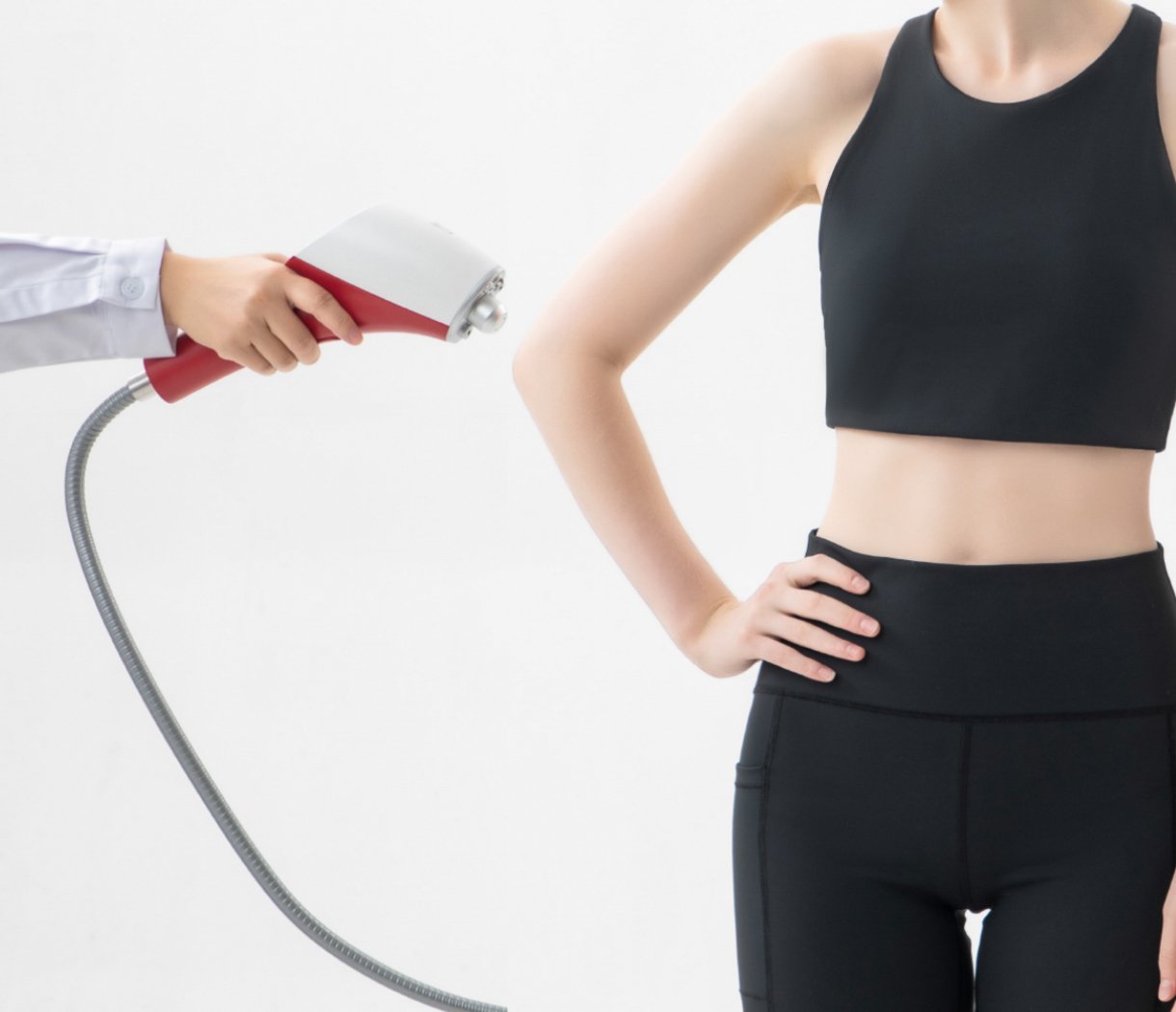Overview of CO₂ Cryotherapy
CO₂ cryotherapy is an advanced form of localized cryostimulation that utilizes medical-grade carbon dioxide to induce a rapid cooling effect on targeted tissues. This method leverages the Joule-Thomson effect, where pressurized CO₂ gas expands upon release, causing an immediate and controlled drop in skin temperature. Unlike whole-body cryotherapy, CO₂ cryotherapy provides localized treatment, making it highly effective for pain management, inflammation reduction, and tissue recovery.
The primary physiological mechanisms behind CO₂ cryotherapy include:
Vasoconstriction and Vasodilation Response: The rapid cooling triggers an initial vasoconstriction (narrowing of blood vessels), reducing local blood flow and limiting inflammation. Upon rewarming, a vasodilation rebound effect occurs, enhancing microcirculation and accelerating the removal of metabolic waste.
Neuromodulation and Analgesia: Cold exposure disrupts pain signal transmission by reducing nerve conduction velocity and activating TRPM8 (transient receptor potential cation channel subfamily M member 8) receptors, which provide a temporary numbing effect.
Metabolic and Anti-Inflammatory Effects: The localized drop in skin and subcutaneous tissue temperature downregulates pro-inflammatory cytokines such as IL-6 and TNF-α while increasing anti-inflammatory mediators like IL-10, supporting tissue repair and pain relief.
Comparing CO₂ Cryotherapy to Liquid Nitrogen Cryotherapy
CO₂ cryotherapy and liquid nitrogen cryotherapy (LN₂ cryotherapy) are two prominent modalities in cryostimulation. While both rely on extreme cold to induce physiological responses, their mechanisms, effectiveness, and practical applications differ significantly.
Temperature and Cooling Mechanisms
CO₂ Cryotherapy: Uses pressurized carbon dioxide at approximately -78°C (-108°F). Upon release, the gas expands and rapidly cools the targeted tissue via adiabatic expansion, creating an immediate but controlled cryogenic effect. The cooling rate is fast but allows for gradual penetration into deeper layers without causing excessive superficial tissue damage.
Liquid Nitrogen Cryotherapy: Utilizes liquid nitrogen at -196°C (-321°F), creating a much more intense cooling effect. The primary mechanism involves direct contact with supercooled nitrogen vapor, leading to extreme surface cooling and deeper penetration when applied for longer durations. LN₂ cryotherapy is commonly used for dermatological treatments, wart removal, and extreme cold therapy applications.
While LN₂ provides colder temperatures, CO₂ cryotherapy offers more controlled cooling, reducing the risk of tissue necrosis and excessive frostbite. This makes it preferable for pain relief, rehabilitation, and athletic recovery.
Effectiveness for Pain Relief and Healing
CO₂ and LN₂ cryotherapy both promote pain relief and recovery, but their depth of penetration and biological response differ:
CO₂ Cryotherapy:
- Optimal for musculoskeletal and nerve-related conditions due to its precise targeting and controlled penetration.
- Effectively reduces localized inflammation and muscle tension through metabolic regulation and vasodilation.
- Well-suited for sports injuries, joint disorders, and chronic pain syndromes.
LN₂ Cryotherapy:
- More commonly used for dermatological procedures, cryoablation, and aesthetic treatments where deeper cellular freezing is required.
- More aggressive cooling can cause localized tissue destruction, which is useful for wart or lesion removal but less ideal for pain therapy.
CO₂ cryotherapy provides gradual cooling without overexposing tissues to extreme cold, making it safer and more effective for pain management, post-exercise recovery, and rehabilitation protocols.
Safety, Accessibility, and Practicality
Safety:
- CO₂ cryotherapy has a lower risk of frostbite and tissue necrosis due to its controlled cooling process.
- LN₂ cryotherapy requires careful application to avoid deep tissue damage.
Accessibility:
- CO₂ systems are more compact, making them suitable for clinics, physical therapy centers, and home use.
- LN₂ requires specialized handling and storage, limiting its accessibility to dermatology and medical facilities.
Practicality:
- CO₂ cryotherapy is portable and easy to administer without specialized cryogenic storage.
- LN₂ treatments require liquid nitrogen tanks, which are expensive and require special handling.
Applications in Pain Management & Recovery
CO₂ cryotherapy is a valuable tool for pain relief and recovery, offering a non-invasive, drug-free approach to managing musculoskeletal and nerve-related conditions. By rapidly lowering skin temperature, it reduces inflammation, modulates pain signaling, and enhances circulation, making it a sought-after solution in sports medicine, rehabilitation, and chronic pain management.
CO₂ Cryotherapy for Musculoskeletal Pain
Musculoskeletal pain, whether from acute injuries, chronic conditions, or post-exercise fatigue, significantly impacts mobility and quality of life. CO₂ cryotherapy acts by rapidly constricting blood vessels, which reduces local inflammation and limits secondary tissue damage. This vasoconstriction is followed by a reactive vasodilation phase, enhancing oxygen and nutrient delivery to the affected area, promoting recovery.
Additionally, cryotherapy inhibits nociceptors by slowing nerve conduction velocity (NCV), reducing pain perception. This makes it beneficial for conditions such as osteoarthritis, tendinitis, bursitis, and chronic lower back pain. Many studies suggest that localized cryotherapy helps reduce muscle spasms and stiffness, making it an effective adjunct therapy for individuals with fibromyalgia or myofascial pain syndrome.
CO₂ Cryotherapy for Nerve-Related Conditions
Neuropathic pain, caused by nerve damage or compression, presents as burning sensations, tingling, or hypersensitivity. CO₂ cryotherapy helps by modulating nerve activity through temperature-sensitive ion channels, particularly TRPM8, which responds to cold exposure by altering pain signal transmission to the brain. This can lead to significant relief in conditions like sciatica, carpal tunnel syndrome, postherpetic neuralgia, and diabetic neuropathy.
Cold exposure also influences neurotransmitter release, reducing excitatory signals like glutamate while increasing endorphin production, creating a lasting analgesic effect. While not a cure, CO₂ cryotherapy provides a safer alternative to pharmaceutical pain management with minimal side effects.
CO₂ Cryotherapy in Sports Medicine
Athletes frequently use CO₂ cryotherapy to enhance muscle recovery, reduce post-exercise soreness, and prevent injuries. The rapid cooling effect limits inflammation and microtrauma in overworked muscles, accelerating recovery from training sessions. By improving circulation post-treatment, it removes metabolic waste and replenishes oxygen, making it highly effective for treating muscle fatigue, strains, and ligament injuries.
Cryotherapy is also used for acute sports injuries, such as sprains and contusions, by controlling swelling and providing immediate pain relief. Research suggests that integrating cryotherapy into a recovery routine can reduce muscle soreness by up to 30% compared to passive recovery, making it an essential tool for high-performance athletes.
Best Practices for CO₂ Cryotherapy
How Often Should You Use It?
The optimal frequency of it depends on the condition being treated. For acute injuries, applying cryotherapy one to two times daily within the first 72 hours helps control swelling and pain. Chronic pain conditions may require three to four weekly sessions for sustained relief. In sports recovery, post-exercise applications help minimize fatigue and maximize performance. Regular but controlled usage ensures long-term benefits while preventing overstimulation of the nervous system.
Safety Precautions and Contraindications
CO₂ cryotherapy is generally safe when used correctly, but certain individuals should avoid treatment. Contraindications include Raynaud’s disease, cryoglobulinemia, severe cardiovascular conditions, and open wounds, as these conditions may lead to excessive vasoconstriction or delayed healing. Overexposure to cold can cause cold burns or nerve damage, so skin temperature should not drop below 5°C. Short exposure times (under three minutes per area) minimize risks.
Combining with Other Therapies for Maximum Results
CO₂ cryotherapy works best when integrated with complementary therapies. Physical therapy enhances flexibility post-cryotherapy, while shockwave and laser therapies promote collagen regeneration and deep tissue healing. Massage therapy after cryotherapy aids in lymphatic drainage and further reduces muscle stiffness, making it a powerful recovery strategy. When combined strategically, these modalities provide faster recovery, longer-lasting pain relief, and improved overall function.
CO₂ Cryotherapy for Different Lifestyles
CO₂ Cryotherapy for Athletes
For athletes, it plays a crucial role in recovery, performance optimization, and injury prevention. Regular sessions improve post-exercise muscle repair, prevent overuse injuries, and enhance flexibility. In professional sports, many teams incorporate cryotherapy to help athletes recover faster between training sessions and maintain peak physical condition.
CO₂ Cryotherapy for Chronic Pain Sufferers
Individuals with chronic pain conditions such as arthritis or fibromyalgia often experience stiffness, joint inflammation, and persistent discomfort. CO₂ cryotherapy reduces reliance on pain medications by blocking pain signals and improving joint mobility. With consistent use, many patients report a significant improvement in daily function and overall well-being.
CO₂ Cryotherapy for Active Individuals & Wellness Seekers
Beyond medical and athletic applications, CO₂ cryotherapy is gaining popularity in the wellness industry. Many use it to boost circulation, enhance skin health, and promote overall recovery after workouts or strenuous activities. Cold exposure has also been linked to endorphin release, stress reduction, and improved sleep quality, making it a valuable tool for individuals seeking holistic health benefits.
FAQs
Q1. How does CO₂ cryotherapy differ from liquid nitrogen cryotherapy?
CO₂ cryotherapy (-78°C) uses Joule-Thomson expansion for controlled cooling, while liquid nitrogen (-196°C) cools via rapid evaporation. CO₂ offers safer, localized treatment with reduced frostbite risk.
Q2. Is CO₂ cryotherapy safe for people with circulatory or nerve disorders?
Not recommended for those with Raynaud’s, peripheral artery disease, or neuropathy, as they may have increased cold sensitivity and risk of tissue damage.
Q3. How long does pain relief last?
Effects last from several hours to a few days, depending on the condition. Cold reduces nerve conduction and inflammation while triggering endorphin release.
Q4. Can CO₂ cryotherapy be combined with other treatments?
Yes, it pairs well with physical therapy, laser therapy, and shockwave therapy to enhance pain relief and recovery.
Q5. How does CO₂ cryotherapy reduce inflammation?
Cold exposure causes vasoconstriction, limiting inflammation, followed by vasodilation, which boosts oxygenation and healing. It also reduces pro-inflammatory cytokines.
Q6. Are there long-term risks with frequent use?
Proper use is safe, but overuse may cause skin irritation, cold burns, or paradoxical inflammation.
Q7. What’s the optimal exposure time?
10 to 30 seconds per area. Exceeding this can cause frostbite or skin damage.
Q8. How does CO₂ cryotherapy aid muscle recovery?
It reduces muscle soreness, inflammation, and fatigue by enhancing circulation and promoting tissue repair.
Q9. Can CO₂ cryotherapy help with nerve pain?
Yes, it slows nerve conduction and reduces neurogenic inflammation, easing conditions like sciatica and neuropathy.
Q10. How can cold burns be prevented?
Follow recommended exposure times, maintain proper device distance, and avoid direct skin contact for extended periods.
References
Effects of Cryotherapy on Muscle Pain and Recovery:
https://pubmed.ncbi.nlm.nih.gov/10215117
Cryotherapy: Overview, Mechanism of Action, Treatment Protocols, and Clinical Applications:
https://emedicine.medscape.com/article/1125851-overview?
Thermal Characterization and Preclinical Feasibility Verification of an Affordable Carbon Dioxide-Based Cryotherapy Device:
https://www.mdpi.com/2306-5354/11/4/391?
The Tissue Response to Hypoxia: How Therapeutic Carbon Dioxide May Improve Oxygenation:



